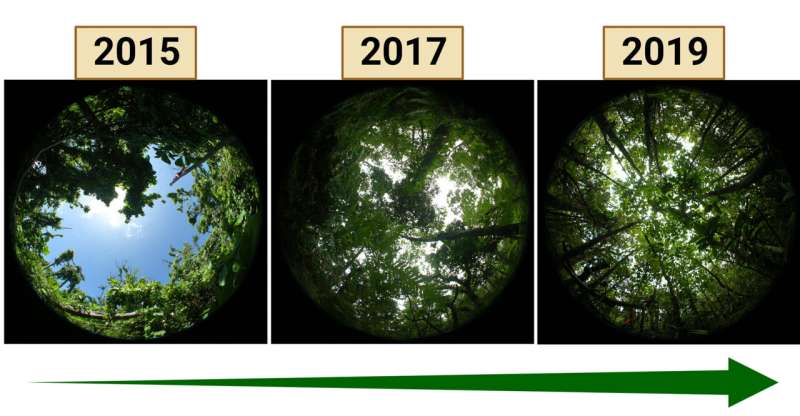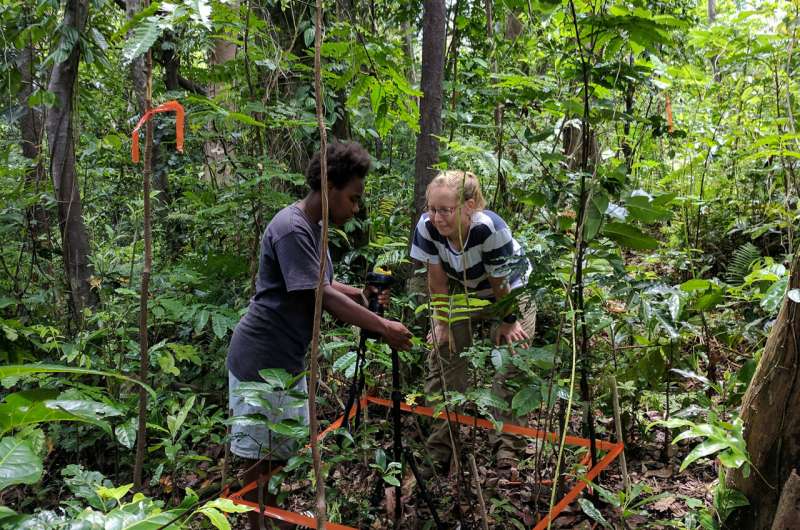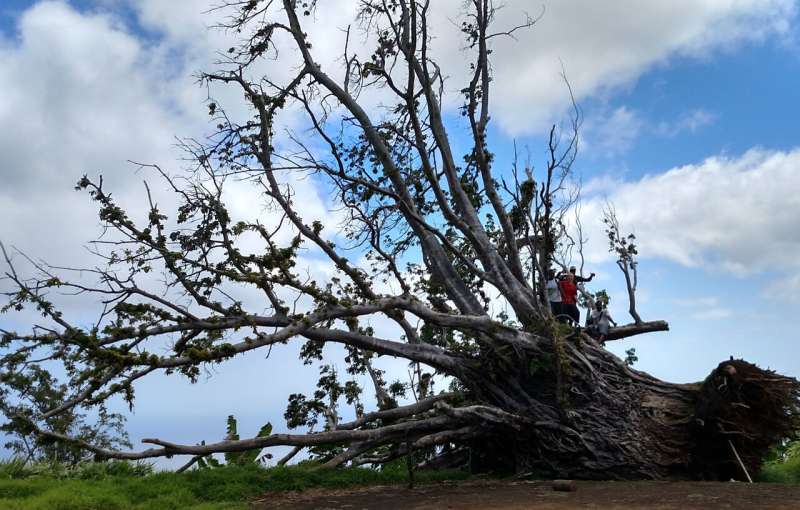This article has been reviewed according to Science X's editorial process and policies. Editors have highlighted the following attributes while ensuring the content's credibility:
fact-checked
peer-reviewed publication
trusted source
proofread
In wake of powerful cyclone, remarkable recovery of Pacific island's forests

After one of the most intense cyclones in world history tore through the Pacific island of Tanna in Vanuatu, new research led by the University of Hawaiʻi at Mānoa showed the resilience of the island's forests.
In the Pacific islands, climate change is expected to increase the intensity and frequency of cyclones, causing huge potential risks to forests and the people who depend on them. In March 2015, Cyclone Pam touched down on the island of Tanna as the strongest Pacific island cyclone in history at the time. With sustained winds reaching 165 mph, Pam pounded the island for 18 hours.
A new study published on February 29 in the journal Science of the Total Environment has documented the remarkable recovery of Tanna's forests after Cyclone Pam. The team, which included researchers from UH Mānoa, The New York Botanical Garden (NYBG), the University of the South Pacific, and the Vanuatu Cultural Center and Vanuatu Department of Forestry, examined post-cyclone recovery across eight forested sites on Tanna over five years.
"Compared to cyclones on other Pacific Islands, Pam caused relatively low levels of severe damage to Tanna's trees," said UH Mānoa School of Life Sciences Professor Tamara Ticktin and lead author on the paper. "In addition, there was high resprouting, widespread recruitment of most tree species present, and basically no spread of invasive species."
The latter is especially surprising, because invasive species often spread rapidly after Pacific Island cyclones.

Cyclone history, stewardship practice, key to resilience
The authors conclude that Tanna's historical cyclone frequency likely fostered the abundance of resilient species, and that Tanna's customary stewardship practices appear to augment the capacity for resilience. This is because they promote a diversity of tree species, life histories and life stages; as well as a wide range of pathways for regeneration.
"Tanna stewards value a wide range of species useful for food, medicines and building materials," explained ethnobotanist and co-author Michael J. Balick, Ph.D., NYBG's Vice President for Botanical Science and Director and Senior Philecology Curator of the Institute for Economic Botany. "And customary stewardship involves management practices that enhance the survival and reproduction of these species."
Co-author Jean-Pascal Wahe of the Vanuatu Cultural Center noted that after a cyclone, stewards weed around native tree species and even plant them.
These actions can help ensure their regeneration while decreasing dominance of weedy understory species.

The study also showed that forests that had previously been subject to grazing by cattle and pigs were slower to recover and will likely be more vulnerable to future cyclones.
"This highlights the key role of forest management in building resilience to climate change," said senior author Gregory M. Plunkett, Ph.D., NYBG's Director and Curator of the Cullman Program for Molecular Systematics. Dr. Plunkett, who has been studying the plants of Vanuatu for two decades, had been carrying out research on Tanna along with Dr. Balick and co-author Marika Tuiwawa of the University of the South Pacific when Cyclone Pam hit. They experienced the terror of the cyclone first-hand and were delighted to also witness forest recovery.
"As the world comes to grips with more frequent extreme weather events, our work suggests that the right kind of human interaction can play a significant role in the survival of forests," said Dr. Plunkett.
This study is part of the wider Plants and People of Vanuatu program, led by Drs. Balick and Plunkett, and was supported by the National Science Foundation, the Critical Ecosystem Partnership Fund, and the National Geographic Society.
More information: Tamara Ticktin et al, High resilience of Pacific Island forests to a category- 5 cyclone, Science of The Total Environment (2024). DOI: 10.1016/j.scitotenv.2024.170973
Journal information: Science of the Total Environment
Provided by University of Hawaii at Manoa





















